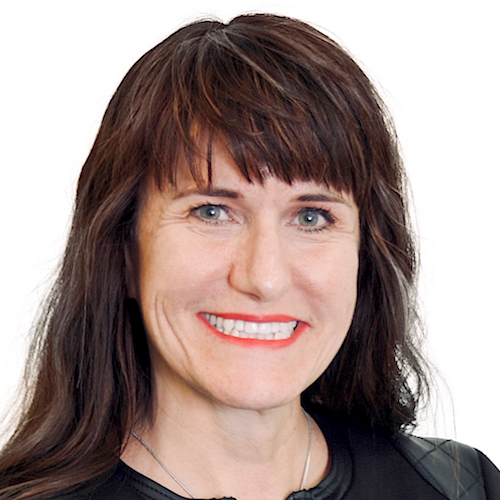
Aging services organizations still have a long way to go in addressing the needs of lesbian, gay, bisexual and transgender older adults. Thankfully, many resources exist to help.
In the midst of the holiday season, providers naturally think about ways to make those in their care have positive experiences. Many residents will join their families for traditional dinners, but others may be unable to travel or may not have family with whom to celebrate.
When we think of providing person-centered care to older adults, our goal is to meet the individuals where they are and engage them in determining how best to meet their needs. When it comes to aging LGBT individuals, however, senior living and care providers often fall short.
LGBT seniors may come from a variety of family backgrounds. They may be closeted, open about their identity or somewhere in between. Some will have traditional families, perhaps even a spouse. Others may be estranged from family members who haven’t accepted their identity. Like millennials opting for “Friendsgiving” over “Thanksgiving” for the annual November holiday, some will have forged new “framilies” consisting of a partner, friends or other like-minded, but unrelated, individuals.
When the need for senior living and care arises, however, many LGBT individuals fear for the ability to live their lives as they want to in a care setting where they have less control over who they spend time with on a daily basis. This lack of choice and inclusion affects not only their happiness but also their sense of safety during their more vulnerable later years.
For example, the Minnesota Transgender Aging Project, a study reported in December 2017 by the Rainbow Project and University of Minnesota Duluth Department of Social Work, looked at the attitudes that transgender individuals in the Midwest had toward aging, and it’s clear this is an area of concern for many.
“I think in situations where other people have care and control over you, whatever biases they are carrying they can bring to you in that setting and you’re not able to do much to protect yourself,” responded a 69-year-old trans woman from the Twin Cities.
A 60-year-old trans woman from rural Wisconsin said she was resigned to having to fight for her rights: “They’re going to call me sir and they’re gonna treat me like one of the guys and I’m gonna have to complain. And I don’t know how effective I’ll be, but I expect to fight a lot. … I expect it’s gonna be a nightmare and the only hope I have is if I have another heart attack that’s fatal before I end up having to be in a nursing home.”
Clearly, we can do better by LGBT older adults. And there is growing interest among long-term care providers and other industry leaders in ensuring that senior living and care organizations are more inclusive of LGBT individuals.
“A history of shame, violence, discrimination and fear causes many persons who identify as LGBT to be less likely to disclose their identity, more fearful of institutions and more likely to be afraid of abuse or mistreatment,” Kevin Bradley, associate director of online learning for LeadingAge, told me. “Often, they might rely on ‘families of choice’ rather than their family of origin for support, putting them at greater risk for social isolation, which can lead to greater emotional and physical risk factors when aging,” he added. Bradley believes it’s important for aging services providers to better know, understand and celebrate those who identify as LGBT.
The annual LGBT Inclusion Reception at the LeadingAge Annual Meeting & Expo aims to do just that. According to Bradley, the reception started in 2006 when a group of members planned an event at the GLBT Historical Society Museum in San Francisco. The event has grown into arguably the hottest ticket for attendees looking for after-hours fun at the conference. October’s event in San Diego did not disappoint, with 1,147 people celebrating inclusion in a standing-room only crowd that included drag performances and dancing to music videos. Partygoers were as diverse as those being celebrated and included a mix of both providers and industry partners, such as MatrixCare, the lead sponsor of the event.
Many of the founding members of the event are still involved in promoting equity and inclusion in the industry, and LeadingAge has steadily been increasing its resources for members who want to promote equity and inclusion in their own communities. (See the list at the end of this column.) In addition to the reception, the annual meeting offered several opportunities for learning more.
On the first full day of the conference, I attended a session titled, “Gay & Gray: The Ethics of Serving LGBT Older Adults.” I was impressed at the turnout, counting more than 75 people despite the early time slot. The presenters introduced a number of hypothetical scenarios and challenged attendees to think through how they would support person-centered health and wellness for LGBT adults, despite interference from staff and / or family members who may be opposed to the senior’s identity or choices.
The audience was very engaged in the topic, and discussions extended well beyond health and wellness to encompass legal ramifications, safety and regulatory issues, staffing / human resources education, board governance and more.
Later that day, a luncheon, the LGBT Network Meeting, gave attendees another opportunity to learn about advancing diversity and inclusion in the industry. Sadiya Abjani, director of learning and equity for elder advocacy group SAGE, introduced the Long-Term Care Equality Index, or the LEI. As McKnight’s Senior Living previously reported, this is a joint initiative of SAGE and the Human Rights Campaign Foundation designed to promote equitable and inclusive care for LGBT older people in long-term care communities.
LeadingAge President and CEO Katie Smith Sloan announced that the organization had signed on as an endorsing organization for the LEI. Abjani invited folks in the room and the broader senior living / long-term care community to take the Commitment to Caring Pledge as an indication of their intention to adopt the LGBT-inclusive policies and practices necessary to provide culturally competent and responsive care to LGBT older adults.
Abjani also presented a session, “Transgender Aging Information and Services for Providers,” an important topic because — in addition to the universal psychological need for inclusion and acceptance — these individuals also may have unique medical considerations related to surgeries or hormones used for transitioning. This is another reason why the person-centered approach is so critical to the quality of care provided.
Bradley notes that LeadingAge has seen steady interest in sessions related to LGBT issues but would like to see even more submissions to choose from — as well as submissions addressing the larger topics of equity, diversity and inclusion. The organization’s deadline for session proposals for its 2020 meeting is Dec. 6.
LGBT issues also were the focus of a session at the recent American Health Care Association / National Center for Assisted Living Convention & Expo in Orlando. SAGE Director of National Projects Tim Johnston, Ph.D., spoke in the assisted living track about “Creating Allies to Advance LGBT Inclusion.”
Are you interested in learning more about this issue and some steps you can take to move your organization closer to equity and inclusion for LGBT individuals?
Some first steps, Bradley suggests, might be to update your organizational policies, incorporate inclusive processes and forms, provide cultural competency training and increase awareness, acceptance and outreach to board members, staff, residents, clients, their families or partners, and vendors — both in your organization and the community. In addition, simple changes such as showing same-sex couples in your brochures, including a rainbow flag or an equality symbol on your website or campus, and including peoples’ preferred pronounces on name tags can go a long way toward communicating an inclusive mindset.
Some additional resources:
- LeadingAge Learning Hub – LGBT QuickCast and Spotlight on LGBT Inclusion (for LeadingAge members)
- Podcast – Excellence in Inclusion & Community, June 2019, LeadingAge Catalyst, Vassar Byrd, CEO, Rose Villa
- Progress Takes Time: Advocating for LGBT Older Adults, by Jerry Brown
- Also see the links below under “Related Articles.”
I’d like to give special thanks to Kevin Bradley of LeadingAge and Charlie Albin of JustUs Health for contributing information for this column.


